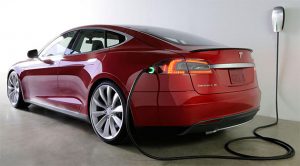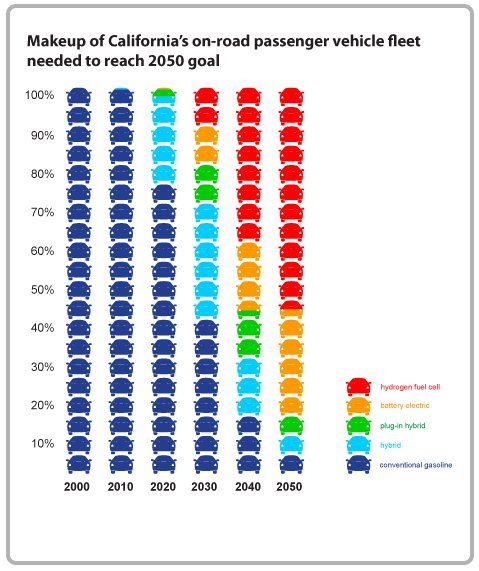Competition Heats up the Alternative Fuel War
As regulations and consumer demand for clean power builds steam, there is a heated battle being waged in the alternative fuel realm. Today, consumers can choose from cars powered by: lithium-ion “plug-ins,” hybrids (a combination of battery and gasoline), and very soon, hydrogen fuel cells.
 Relatively new to the crowded alternative fuel playing field, hydrogen fuel cells are already setting themselves apart from the pack. While currently a nearly non-existent market (with only about 1,000 fuel cell-powered cars and buses in operation globally), hydrogen fuel cells are poised to become an alternative fuel super power.
Relatively new to the crowded alternative fuel playing field, hydrogen fuel cells are already setting themselves apart from the pack. While currently a nearly non-existent market (with only about 1,000 fuel cell-powered cars and buses in operation globally), hydrogen fuel cells are poised to become an alternative fuel super power.
How does it work? Put simply, hydrogen and oxygen are combined at the molecular level to generate electricity. The “exhaust” left behind is water.
Unlike its fully electric competitors, cars powered by hydrogen fuel cells do not need to be plugged in, but they do need to be refilled with hydrogen on a regular basis – on average at 250 mile intervals. The current number of hydrogen refilling stations in the U.S. is miniscule, making widespread adoption unlikely anytime soon.
Yet hydrogen fuel cells may be just what California needs. The state plans to have 25 hydrogen fueling stations (capable of charging 4,000 vehicles) operating by fall of next year. Current research points to modifying existing gasoline stations to safely store and dispense hydrogen, which could make hydrogen charging stations much more accessible. California already tops the U.S. in electric charging stations, with 3,990 in 2013.
Detractors of this technology note that to create hydrogen in the first place requires burning fossil fuels, dispelling the zero emissions claim. The most fervent detractor happens to be Elon Musk, CEO of Tesla. Musk intends to dominate the alternative fuel market and has put billions behind lithium batteries. Fully aware of the main drawbacks of plug-ins — battery cost, charge time, charging station scarcity — Musk intends to eliminate them all.
First on the agenda, battery cost. Musk has intends to double the world’s supply of lithium ion batteries and expand its charging networks. In a reported $4-5 billion dollar deal, Tesla is partnering with Panasonic to build a supersized battery production facility. Dubbed the Gigifactory, its goal is to exceed current build capacity of all the lithium battery factories worldwide. The economy of scale will lower the cost of individual batteries, possibly by as much as 30%, Musk projects.

For Musk’s second challenge, battery range, scientific research is making strides already. Korean scientists are attempting to dramatically decrease charge time for lithium batteries by using carbonized graphite to create ultra-conductive pathways throughout the entire cathode.
And the low number of charging stations currently scattered throughout the U.S? Musk has an answer for that, too. The Tesla Model S has an optional dual charger promising 58 miles of travel per hour of charge. Tesla also offers free Superchargers that can charge a battery half-full in 20 minutes at 103 stations around the US, with many more planned. [endgadget.com August 2014] As electric vehicles become more prevalent, supporting equipment will follow. Analysts predict that vehicle charging stations will number more than 1.5 million by 2017.
Though the battle over alternative fuel dominance is far from over, it is certain that greener vehicles, whether battery-powered or hydrogen-fueled, or hybrid, will soon become more of a legitimate player in the U.S. economy. As research continues, battery and fuel cells technology will improve, lowering costs and increasing reliability, making them a much more attractive purchase option.
image 1: Tesla CEO Elon Musk has invested billions in the success of lithium battery technology in the hopes of making Tesla a worldwide automotive giant. (Credit: Telsa.com)
image 2: The California Air Resources Board (CARB) leads the nation in zero emissions mandates. Based on how the state’s complex emissions credit rules are calculated, hydrogen-powered vehicles earn more points for range and speed of refueling than do battery-electric car. Due to this incentive, CARB projects hydrogen-powered vehicles will out-number battery-powered vehicles by 2030. (Credit: CARB.com)
